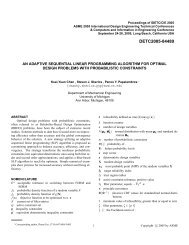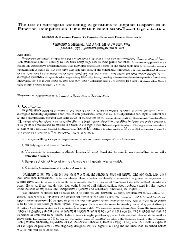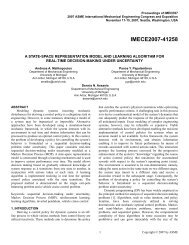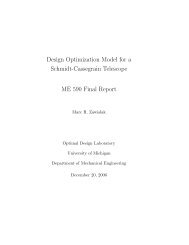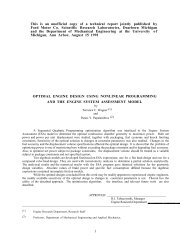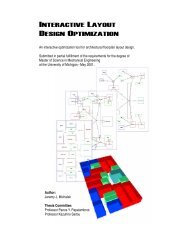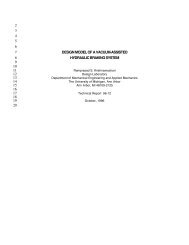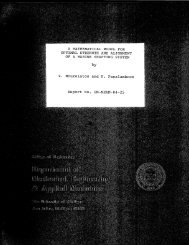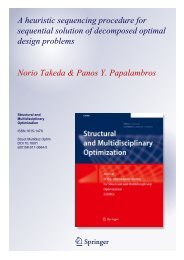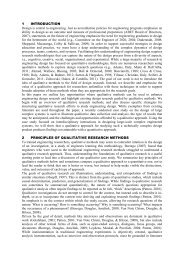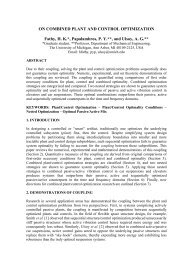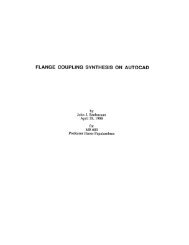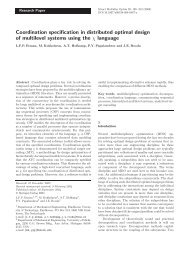Decomposition Analysis of an Automotive Powertrain Design ...
Decomposition Analysis of an Automotive Powertrain Design ...
Decomposition Analysis of an Automotive Powertrain Design ...
You also want an ePaper? Increase the reach of your titles
YUMPU automatically turns print PDFs into web optimized ePapers that Google loves.
the surface-to-volume ratio at a volume 1/3 <strong>of</strong> swept volume. About 50% <strong>of</strong> the heat loss in the<br />
Otto cycle occurs by that time in the thermodynamic cycle.<br />
The breathing characteristics <strong>of</strong> a naturally aspirated engine depend on the ability <strong>of</strong> the<br />
fluid motion to follow the piston motion. The piston motion effects a rarefaction wave that<br />
propagates through the induction system to the throttle <strong>an</strong>d results in <strong>an</strong> attend<strong>an</strong>t compression<br />
wave which arrives at the intake valve. For engines with fixed geometry induction systems, the<br />
single torque peak occurs where the compression wave is 'tuned' to the runner lengths, cam<br />
events, <strong>an</strong>d piston speed. For variable geometry induction systems, multiple torque peaks c<strong>an</strong> be<br />
obtained. This tuning behavior is described with the Mach index, Z, the volumetric efficiency, η v<br />
<strong>an</strong>d the tuning pressure, ∆p t . These are, respectively, a normalized speed <strong>of</strong> sound, a normalized<br />
mass flow, <strong>an</strong>d a scalar approximation to the effects <strong>of</strong> the compression wave.<br />
The Mach index, defined as (Taylor, op cit.),<br />
Z = 2 s N e (b/d i ) 2 /(60 a o C s n v ) (46)<br />
is the ratio <strong>of</strong> <strong>an</strong> idealized flow velocity past the valve to the speed <strong>of</strong> sound. The discharge<br />
coefficient, C s , accounts for flow losses through the induction system <strong>an</strong>d is expressed as<br />
C s = C stiff C m C p (i vc - i vo )/180 (C m<br />
2 + C p<br />
2 - C m<br />
2 C p<br />
2 ) -0.5 . (47)<br />
The volumetric efficiency is the volume <strong>of</strong> air flow (referenced to st<strong>an</strong>dard conditions)<br />
normalized against the volume displaced by the piston. The tuning behavior is characterized by<br />
the volumetric efficiency curve as a function <strong>of</strong> Mach index <strong>an</strong>d engine variables. It c<strong>an</strong> be<br />
represented at various levels <strong>of</strong> detail. In the simplest approach, a baseline is determined <strong>an</strong>d<br />
represented as function <strong>of</strong> Z,<br />
η v = f (Z). (48a)<br />
As bore <strong>an</strong>d stroke are ch<strong>an</strong>ged the engine speed <strong>of</strong> the tuning peak ch<strong>an</strong>ges accordingly. Such <strong>an</strong><br />
approach only describes the relationship between piston speed <strong>an</strong>d compressibility.



